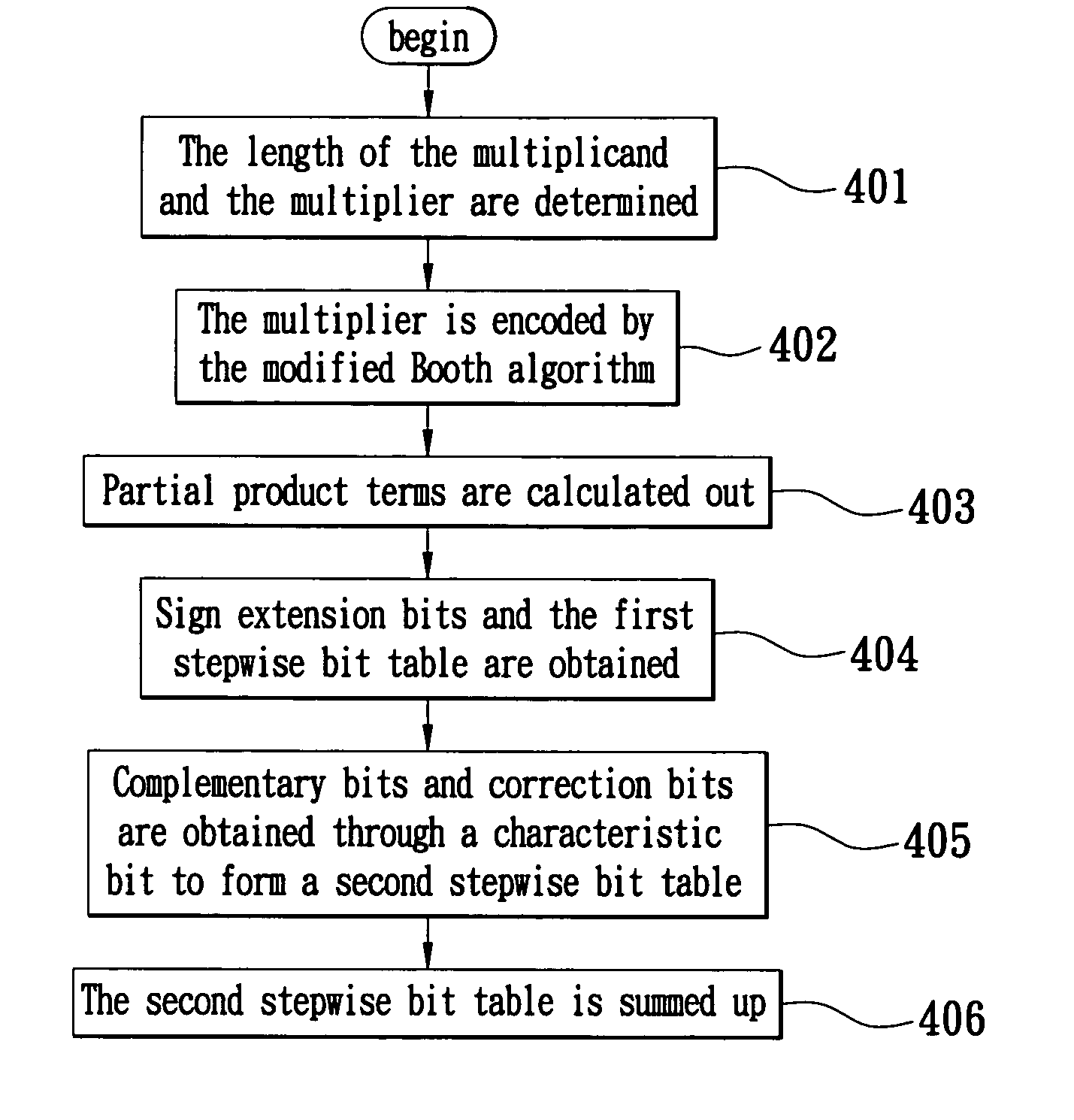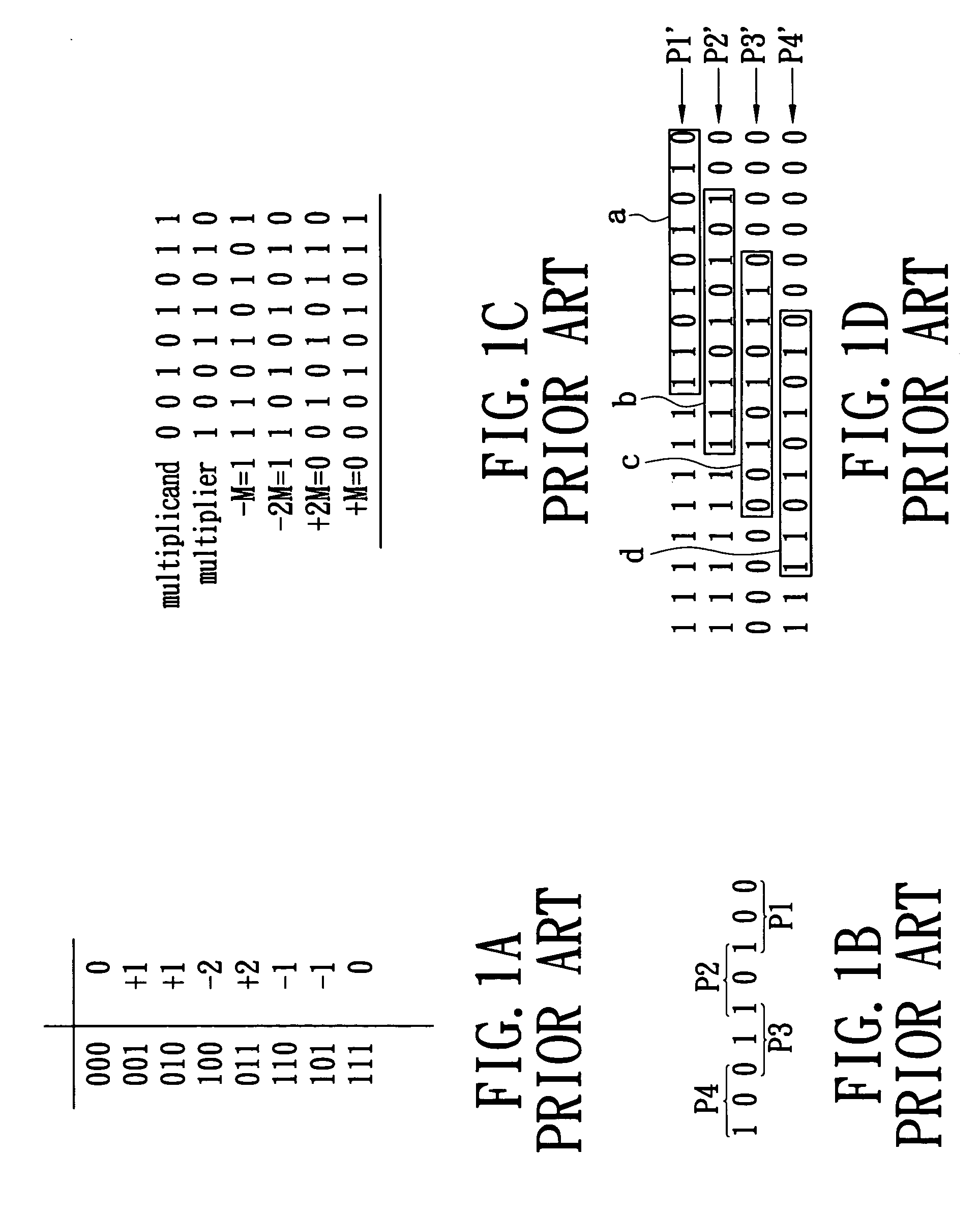Multiplier sign extension method and architecture
a multiplication sign and extension method technology, applied in the field of multiplication sign extension method and architecture, can solve the problems of wasting judgment and operation time, affecting performance, etc., and achieve the effect of reducing the waste of chip area and reducing the size of the multiplier
- Summary
- Abstract
- Description
- Claims
- Application Information
AI Technical Summary
Benefits of technology
Problems solved by technology
Method used
Image
Examples
case 1
[0026] As shown in FIG. 2C, a first complementary bit c1 is provided before the MSB of the first partial product term a, a second complementary bit c2 is provided before the MSB of the second partial product term b, a third complementary bit c3 is provided before the MSB of the third partial product term c, and a fourth complementary bit c4 is provided before the MSB of the fourth partial product term d. The lowermost row is the total value s2 of sign extension bits obtained in advance. If the MSB of the above partial product term a, b, c, or d is 1 (i.e., the partial product term is negative), the sign extension bit region s1 is correctly set to 1. The corresponding complementary bit is thus set to 0 without affecting the correct value. If the MSB is 0 (i.e., the partial product term is positive), the sign extension bit region s1 is wrongly set to 1. The complementary bit is thus set to 1. In binary addition, a binary number with all bits being “1” added to by 1 sets all bits to 0 ...
case 2
[0033] if the MSB is 0, c5, c6 and c1 are set to 100.
[0034] Reference is made to FIG. 4. First, the width of a multiplier is determined. That is, the numbers of bits of the multiplicand and multiplier are known, and the sign extension bit total value (a constant value obtained by summing up the sign extension bit region) is also determined (Step 401). Next, the multiplier is encoded by the modified Booth algorithm to obtain possible values (−M, +M, −2M, +2M) of partial product terms through 2's complement and shifting. The multiplier is taken apart with 3 bits as the unit. If there is one group having less than three bits after the multiplier is taken apart, “0” or “1” must be filled in without affecting the result (Step 402). The multiplicand is then multiplied by the above encoded multiplier to obtain partial product terms (Step 403). The partial product terms are arranged according to the rules of the modified Booth algorithm to obtain sign extension bits and a first stepwise bi...
PUM
 Login to View More
Login to View More Abstract
Description
Claims
Application Information
 Login to View More
Login to View More - R&D
- Intellectual Property
- Life Sciences
- Materials
- Tech Scout
- Unparalleled Data Quality
- Higher Quality Content
- 60% Fewer Hallucinations
Browse by: Latest US Patents, China's latest patents, Technical Efficacy Thesaurus, Application Domain, Technology Topic, Popular Technical Reports.
© 2025 PatSnap. All rights reserved.Legal|Privacy policy|Modern Slavery Act Transparency Statement|Sitemap|About US| Contact US: help@patsnap.com



